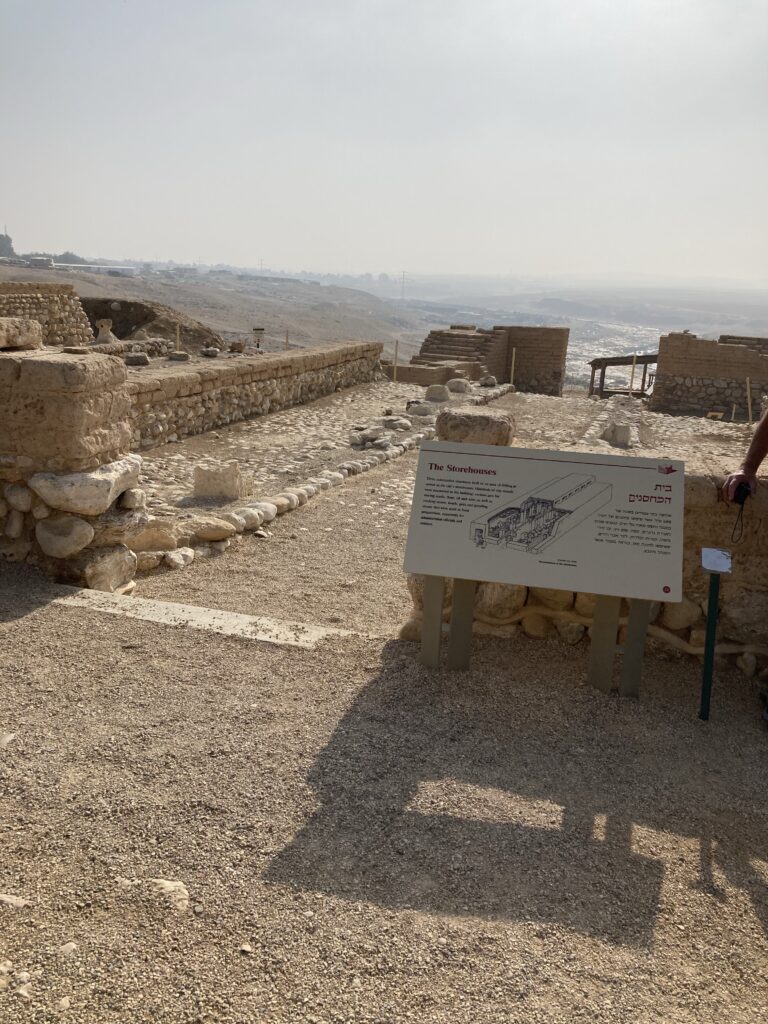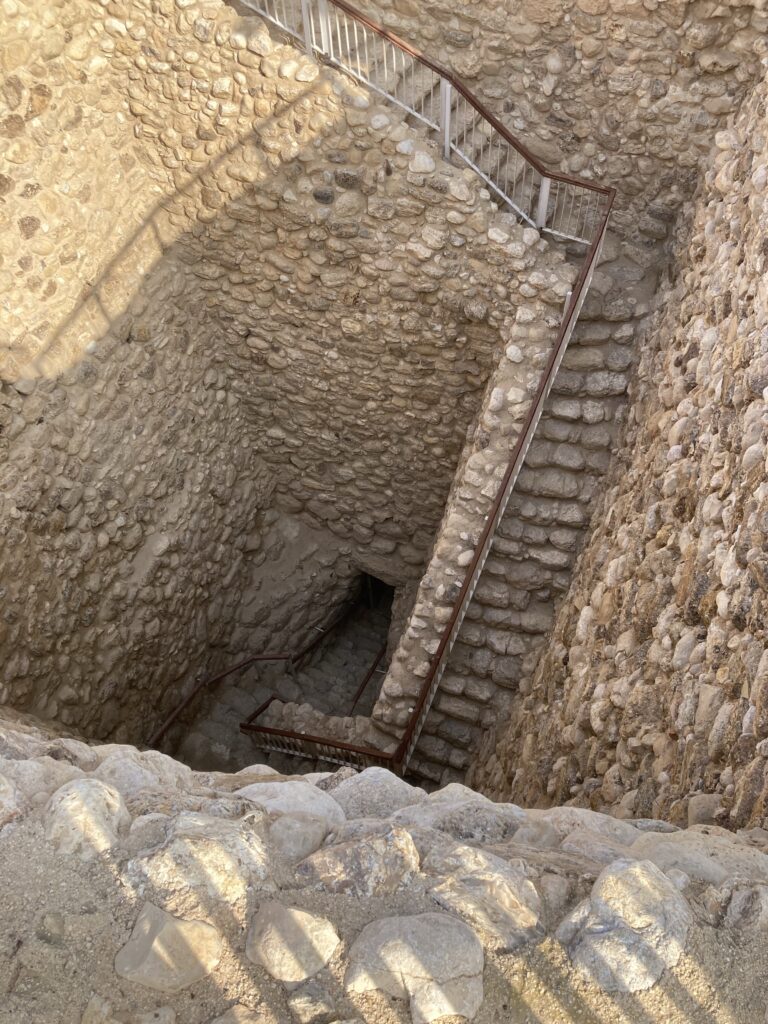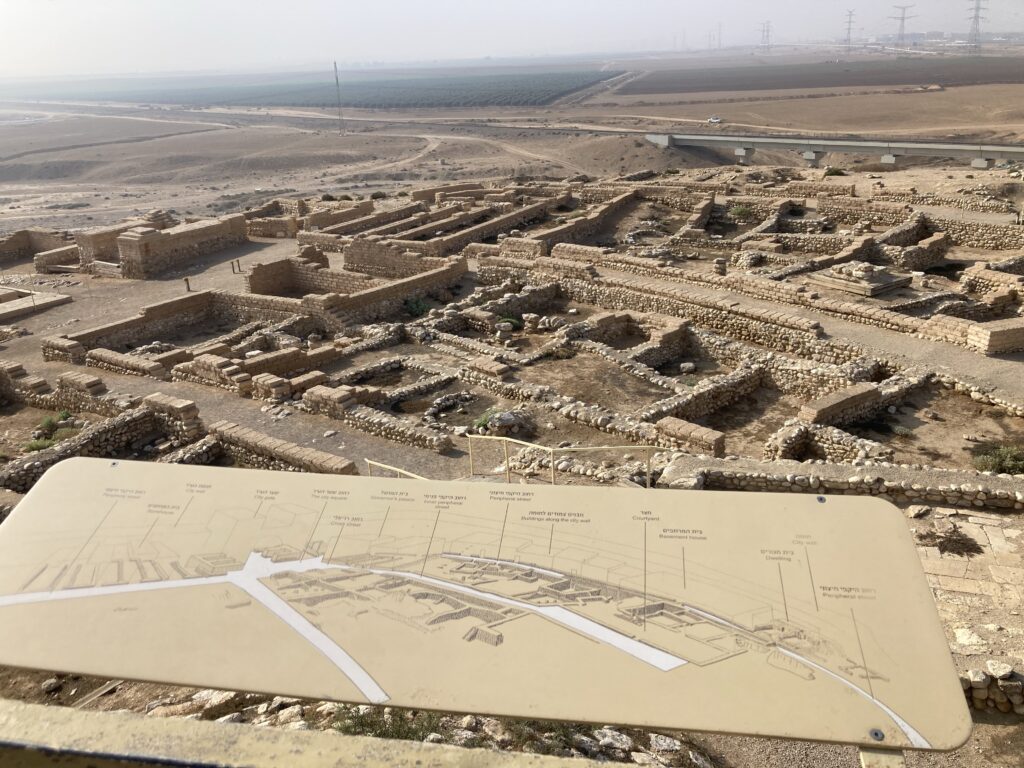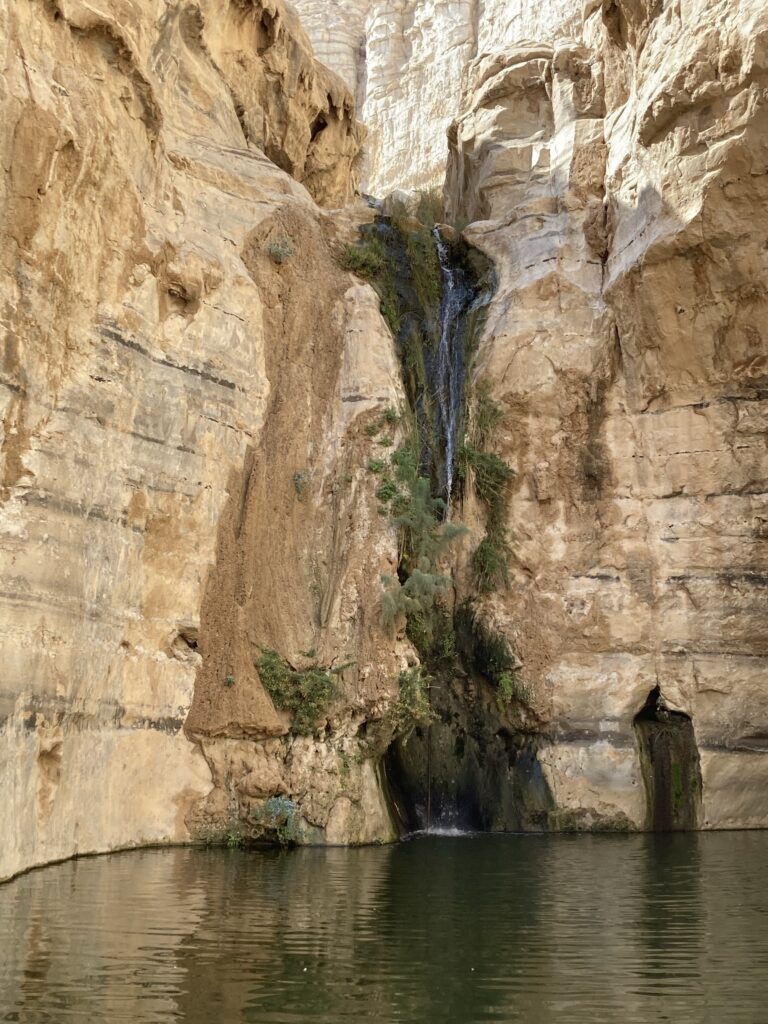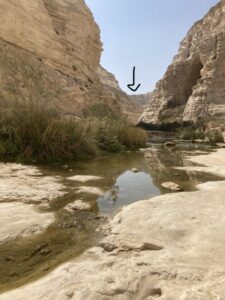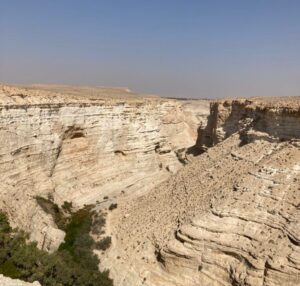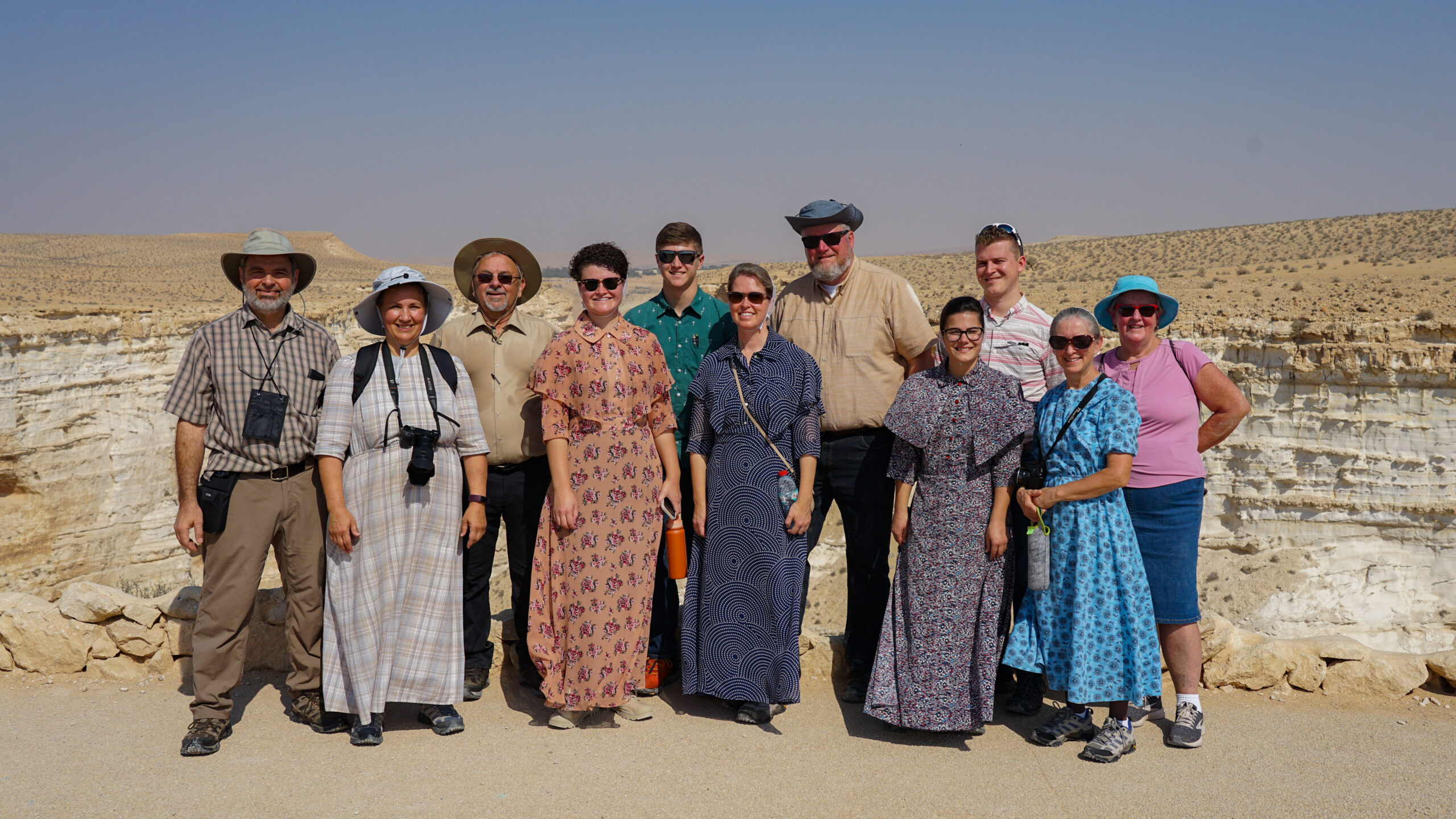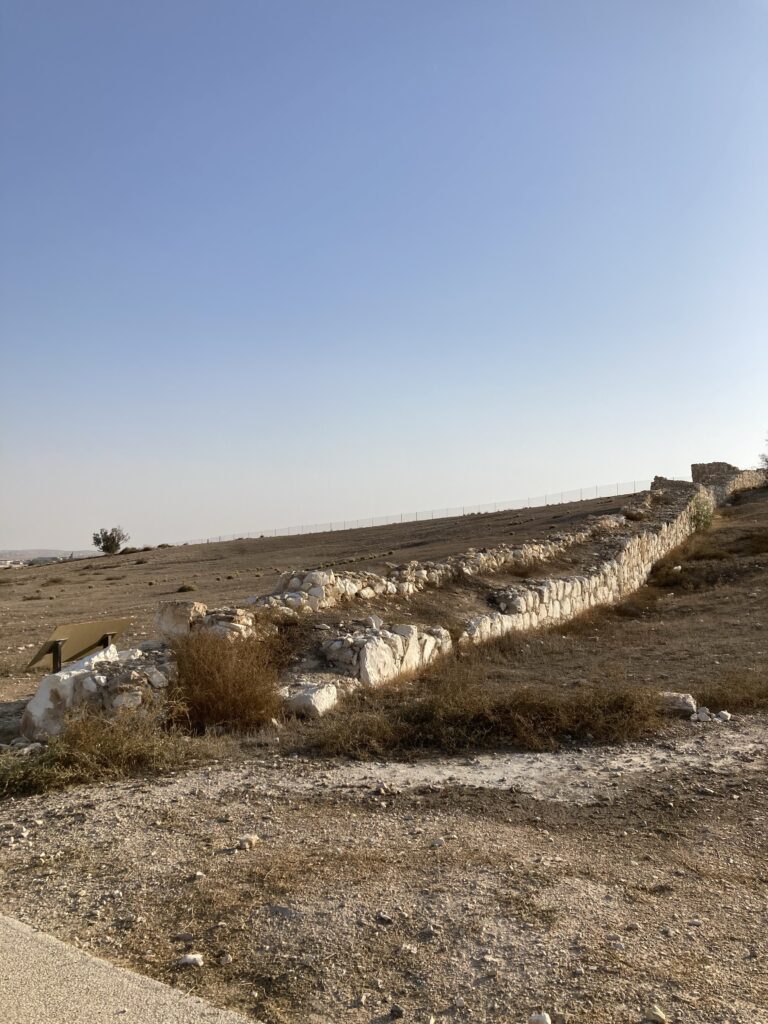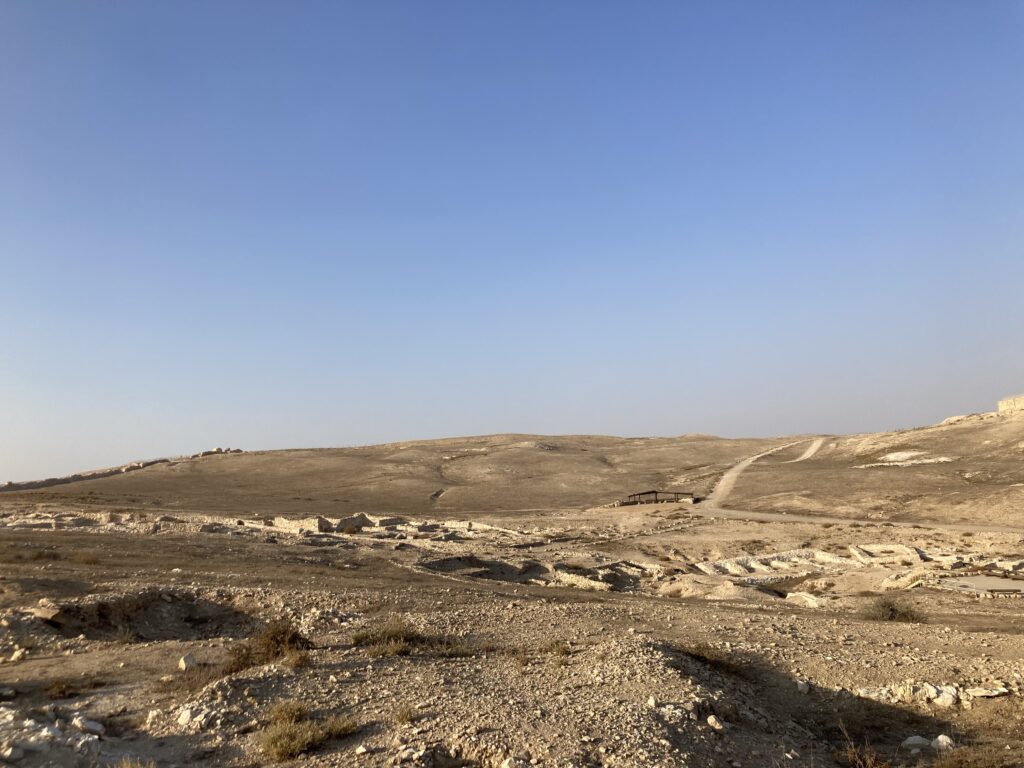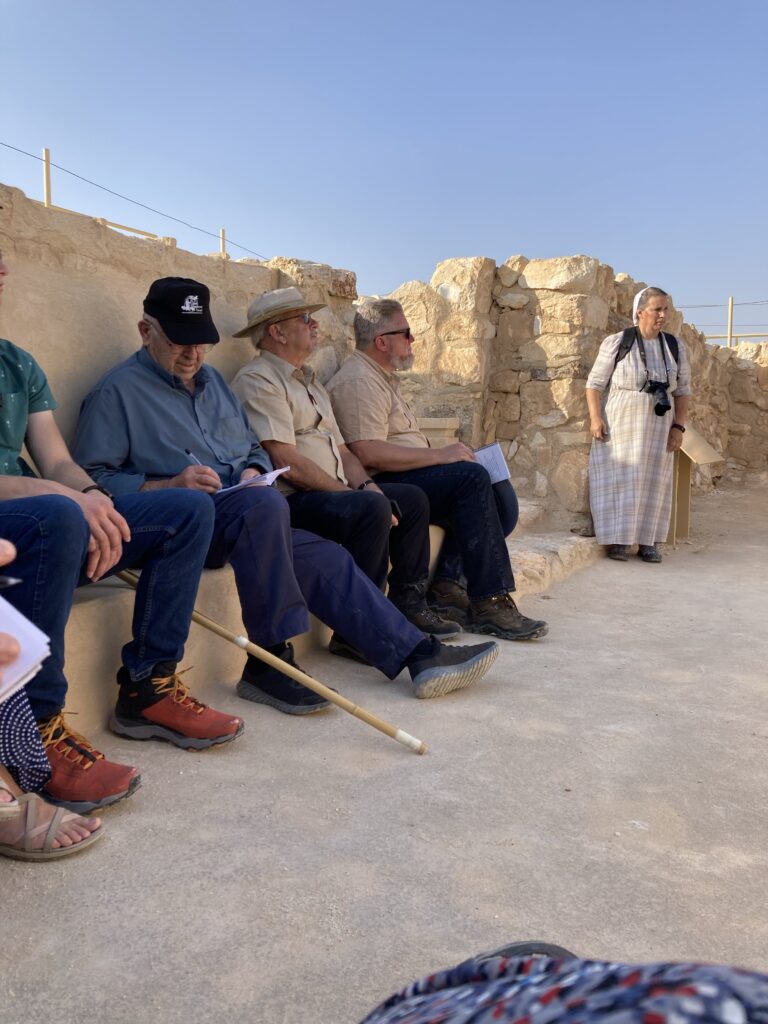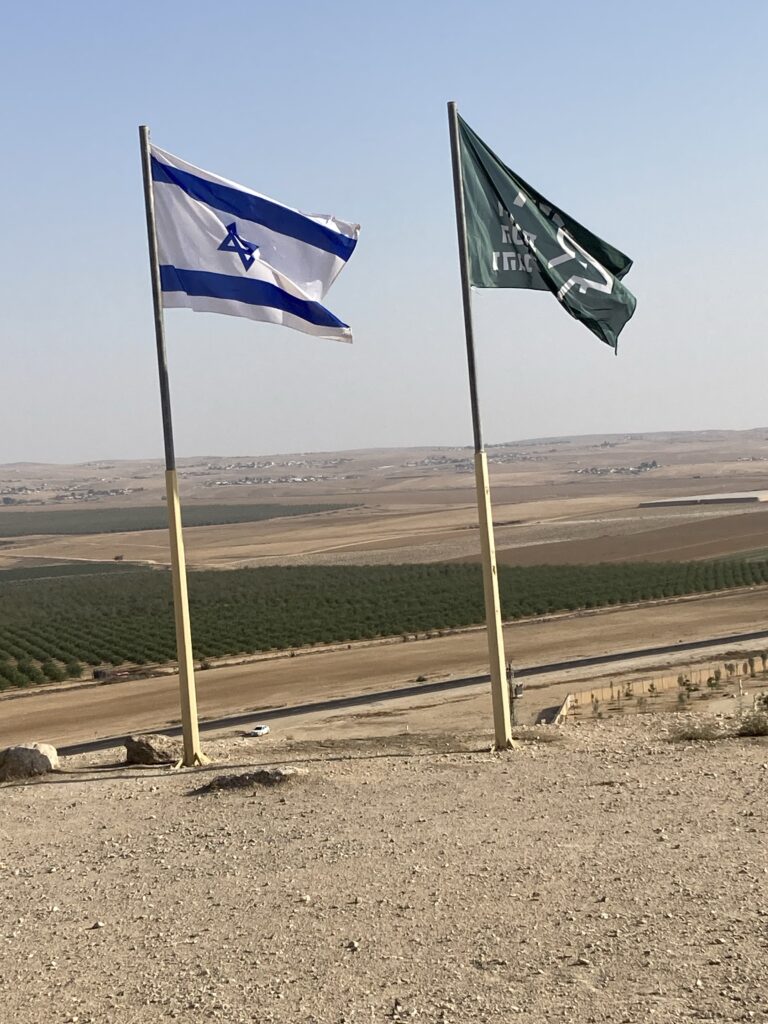We started our day with a hike up Tel Be’er Sheva, the site of Abraham’s well and a city dating from the 8th and 9th century BCE.
This is the place where Abraham came when God promised him the land, and instead of coming in to conquer, Abraham dug a well (Be’er) and swore an oath (Sheva) with Abimelech for the use of the water. Genesis 21:31 Beersheba is in the south of Israel, the north end of the Negev (desert, meaning to wipe dry).
Be’er Sheva is the end of the patriarch’s road, beyond it is only desert. The southernmost city in OT Israel, so the phrase “from Dan to Beersheba” means all the land. As we drove through this area we saw lots of Bedouin camps, the tents and camels seem to appear out of nowhere, as you look across the hills there are random dots of tents/shack houses and modern towns.
From Be’er Sheva we headed further into the Negev, south to Wadi Zin at Ein Avdat. Ein (Springs) Avdat (name of a ancient Nabataean city nearby), is truly streams in the desert. The source of the water is unknown but it is slightly salty. We tasted the needles of one of the trees for a little salt.
I never pictured the wilderness with such high hills, we were in a river valley (wadi) and the sides went very high above us. We all hiked back to a waterfall, then a few returned to the bus and the rest took a longer hike up to the top that included several switchbacks and two ladders to reach the top rim.
Andrew told us the wilderness is the land of God, and there is rabbinic teaching that the farther you go in the wilderness the closer you get to God. God brought his people through the wilderness to enter the land of promise, wilderness in our lives is to teach us something and God is always near,
After Ein Avdat we stopped for lunch at an area nearby with a gas station, coffee shop and McDonalds, then back towards our hotel to visit Tel Arad.
Tel Arad is an ancient city built ca.3500 BC, and later rebuilt as a Canaanite city. It is the oldest city in the area that shows signs of urbanization; a double wall, city planning, and use of trade. Because of its strategic location near the border and a crossroads it was important to several different civilizations including the Canaanites, who traded with Egypt, the Divided Kingdom of Judah, and the Romans.
There is a temple in Tel Arad set up and oriented East to West, just as the Jerusalem temple though on a much smaller scale. Because the altar is of uncut stone, it’s identified as a temple to YHWH probably buried during Hezekiah’s time (2nd Chronicles 31:1) and so preserved from destruction later. Interestingly, the temple has two altars of incense in the Holy of Holies possibly indicating mixed worship.
After more hiking around the site, we went back to the bus for a short ride back to the hotel and enjoyed dinner together in the hotel dining room. Some of us went out to explore the small shopping area and community space near the hotel, get some bottled water, and enjoy the lovely weather.

